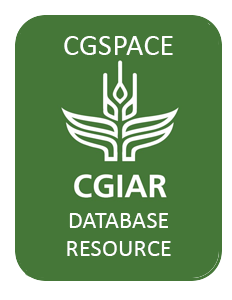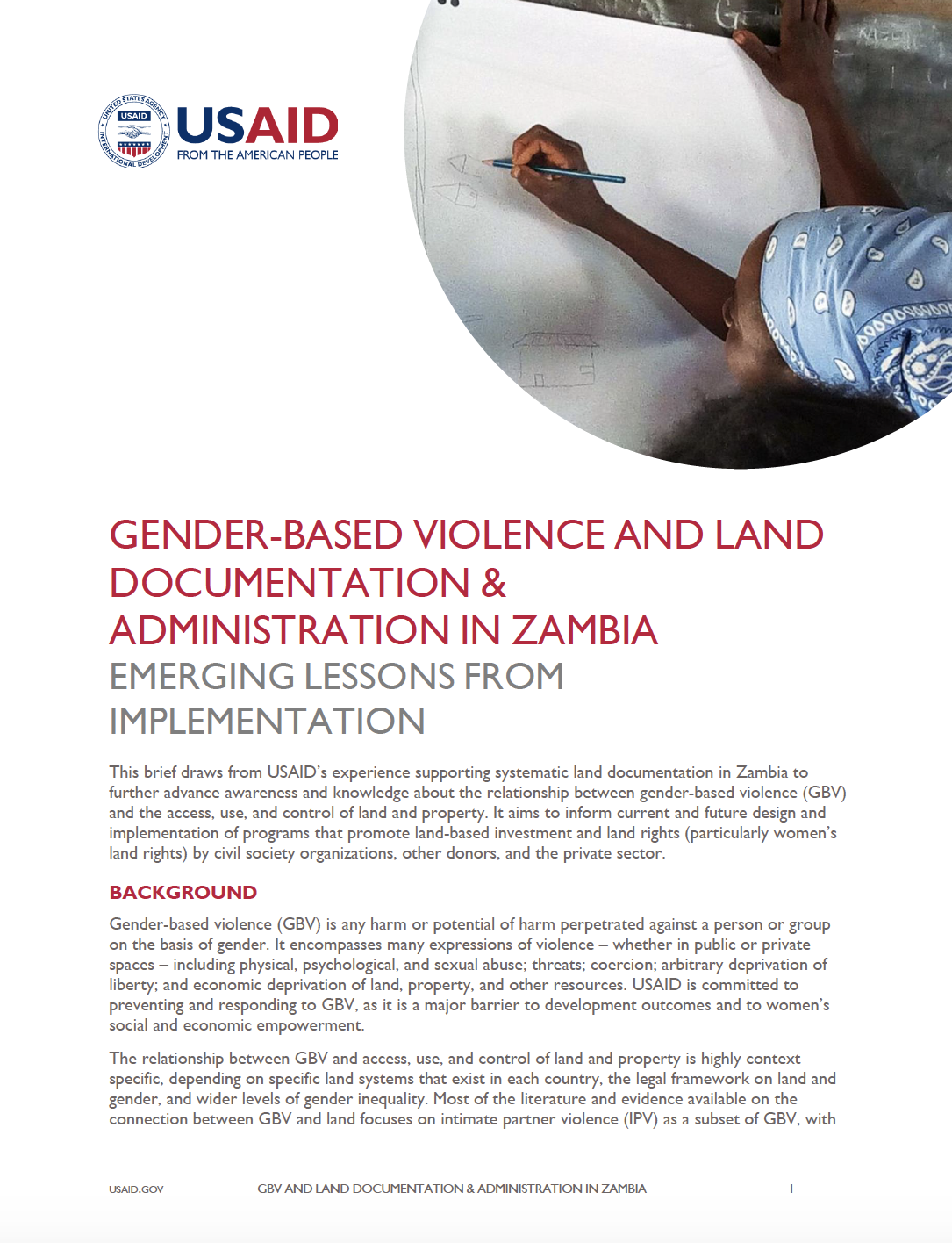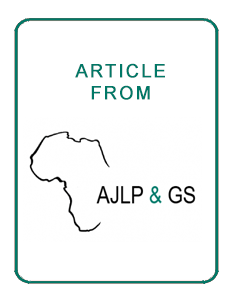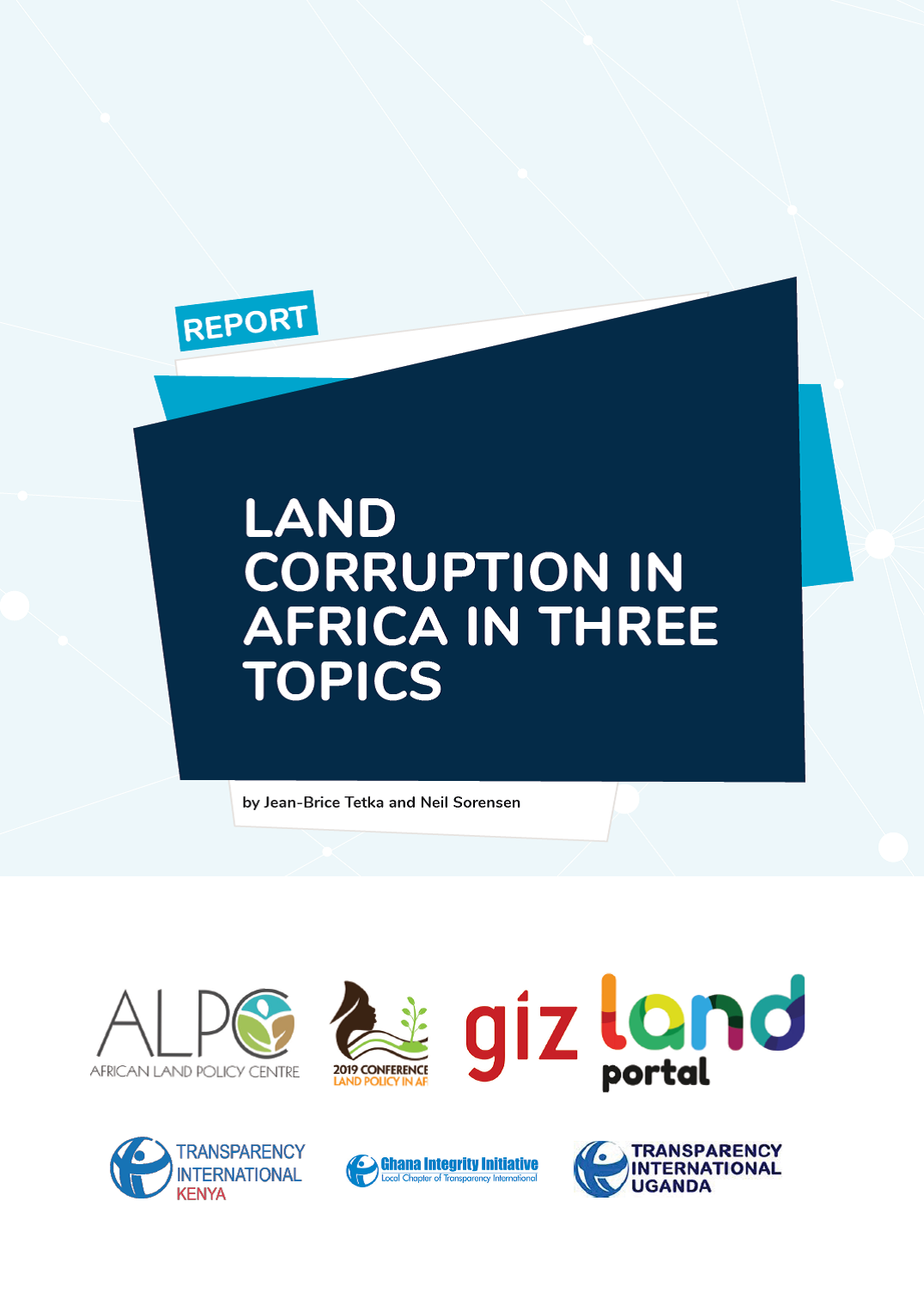Government mainly raises domestic revenue through taxation such as income tax, value added tax and customs and excise duty. Residential rental income tax is a component of income tax. There is low rental income tax collections in Zambia caused by among other things low taxpayers’ compliance. In…
This brief draws from USAID’s experience supporting systematic land documentation in Zambia to further advance awareness and knowledge about the relationship between gender-based violence (GBV) and the access, use, and control of land and property. It aims to inform current and future design and…
This study was on mitigating land corruption through computerisation of land governance activities that include land use planning, cadastral surveying, servicing of land, land allocation, land registration and titling and land development. Using evidence from Lubumbashi (Democratic Republic of…
In Zambia, security of tenure for communities residing under customary land tenure settings has in recent years increasingly come under threat owing to the pressures of high rate of urbanization, speculation, subdivision and conversion to state land, which effectively excludes marginal…
This chapter investigated threats of statutory tenure on customary land. The study was primarily qualitative in nature and adopted a case study approach. Using evidence from Chamuka Chiefdom in Chisamba District, Central Province, the paper concludes that there are various threats of statutory…
The present report aims to provide a climate and vulnerability analysis of the Green Innovation Centres (GIC) target commodity value chains. Herein we identify climate change- related vulnerabilities, hazards, and opportunities for adaptation to the same. Ultimately, our goal is to foster…
Despite the growing attention on uncontrolled and unprofitable urban sprawling in many African countries, few pragmatic solutions have been raised or effectively implemented. While uncontrolled and unprofitable urban expansions happened primarily due to poor land use management and dysfunctional…
Despite the growing attention on uncontrolled and unprofitable urban sprawling in many African countries, few pragmatic solutions have been raised or effectively implemented. While uncontrolled and unprofitable urban expansions happened primarily due to poor land use management and dysfunctional…
In developing countries, agricultural cooperatives are increasingly being used to promote improved agricultural technologies and alleviate food insecurity and poverty. However, little is known about the role of agricultural cooperatives in accelerating the adoption of improved agricultural…
From July 17 to August 7, 2019, the Land Portal Foundation, the African Land Policy Center, GIZ and Transparency International Chapters in Ghana, Kenya and Uganda co-facilitated the dialogue Land Corruption in Africa addressing the role of traditional leaders in customary land administration,…







